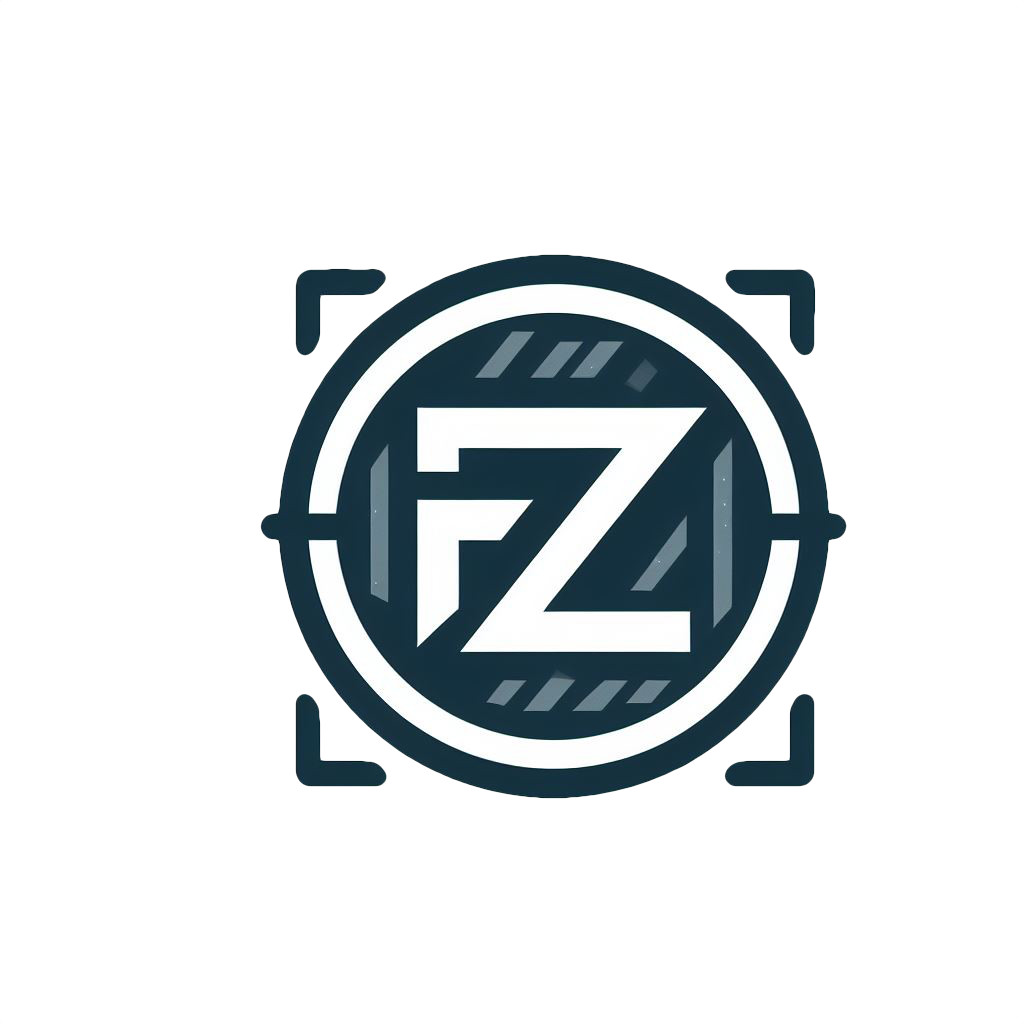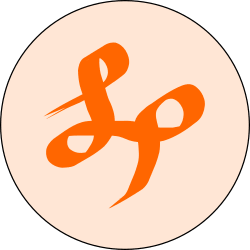Trying to discover new/unheard Linux desktop programs (Sorry for the confusion).
Edit: I apologise for confusing a lot of people. I meant Linux desktop “programs” coming from Windows/Mac. I’m used to calling them “apps”.
Edit: 🙌 I’m overwhelmed with the great “programs” people have recommended in the comment section. Thank you guys.
Logseq.
What is Logseq?
It’s a non-linear note taking app that allows smart linking and is made as a second brain.
It makes use of the Zettelkasten system, where, in theory, you make notes of everything and categorize it. Over time, you offload your brain and make it free for more productive stuff.
Logseq is often considered as a FOSS alternative to Obsidian.
I tried it and really wanted to like it, but the Android client’s UI is just unusable for me. as much as I prefer going FOSS whenever I can, I tried Obsidian and stuck with it. it’s electron on desktop and definitely not native UI on mobile, but feels much more polished.
Yeah, the Android app is horrible. I only use it if I don’t have my PC in arm’s reach.
It feels sluggish, buggy, is overloaded, I always get sync issues (usually the last words I just typed go missing), and some features (especially the graph overview) don’t work at all sometimes. And the whole app sometimes feels like an alpha version, which is just a no-go…
I really hope the mobile app gets polished more over the next months. Many people nowadays mostly use mobile devices, and having such an unpolished app really hurts the image. And, PLEASE devs, test your software before shipping it out. Especially the mobile app is broken half the time.
I still gladly pay the 5$/ month for the optional sync and to support the devs.
I was never able to fully get into Logseq, might give it another try at some point.
Have you tried QOwnNotes? I think it’s pretty good
I have not, I’m using Standard Notes at the moment. I’ll have a look at QOwnNotes though, thanks for the recommendation
QOwnNotes
Thank you for recommending this. I started using Joplin about week or two ago, but this one seems even better for me.
Do it!
I had some initial problems in the beginning, because I was used to linear note taking apps like OneNote or Joplin, but once I watched a guide on how it works, it clicked and now it’s my second nature. I even began to write my hand written notes in Logseq style!
TL;DR, if you don’t wanna watch any guides/ read docs:
- Indentation matters. Logseq works with a parent-child hierarchy
- You usually don’t open or create new pages, you write everything in your journal and link stuff there.
- Use links, either with
[[Link]]or#Tag, which are the same. They crosslink different topics and reveal connections. - Make use of plugins. There are thousands of it. Especially the Graph Analysis plugin should be included by default.
I used Obsidian extensively at a previous job. The linking of notes was super helpful! I don’t think it’ll work as well for my needs at the moment (at work) but I’ll give it a go
What do you do at your job? As long as you don’t work at an assembly belt in a factory, you will still probably get benefits out of it.
Examples:
- Notes about colleagues or customers
- Project ideas
- Random thoughts
- Writing down meetings and mails
- And much more!
Mainly data entry. I’m writing bullet form (pro for Logseq) justifications that the QA uses to understand my ratings (the data entry aspect). I will occasionally work on the same task so I open up the original note and just add to it.
I know that I could use Logseq to link -
[[link]]- the different task projects together (maybe). Something likeProject->individual task.My notes look like this currently:
A: - some thoughts B: - more thoughts C: - this is bad D: - this is goodI would then copy and paste all of that into a text box on our system (per task) where the QA can use that to understand my ratings of the task. My role title is Advanced AI Data Trainer, it sounds more impressive than it is. It’s glorified data entry.
Do you feel like offloading stuff into your notes helps your cognition?
Yeah, definitely, especially at work.
It really helped me to switch off my “work brain”, because I know, that everything I did today is written down, and I don’t have to keep things in my mind anymore after work. Doing that was a blessing for my stress level and mental health.It also gives me the edge above my colleagues that I “remember” everything I did in the last months, which is nice when my boss wants to know details of a project I did a year ago.
I basically can’t even remember what I did 5 minutes ago (ADHD says hello), but I know exactly where I can find that knowledge. This frees up my working memory (psychological term, not related to work) immensely. It’s basically like transfering more tasks onto your hard drive instead of keeping it in the RAM.
It’s also great to give me an graphical overview of all I think and work on all day, and unveals connections I never thought of between different topics.
For private use, it’s also great as a journal, though I gave up on that because I’m too busy for it and it cost too much time in my everyday life. But I still use it daily for normal note taking, e.g. results of some experiments at home, hobbies, thoughts, and much more.
Fuck you I’m sold. That sounds so useful if I can stick with it enough.
That sounds so useful if I can stick with it enough.
That’s my main issue for private use. At my job, I never had problems sticking with the habit of writing everything down. I work in a science job, and documentation is key there. So, I basically get paid for exactly that.
But in my free time, the whole concept of task management, knowledge offloading, and more, is a bit harder for me, especially when I come home tired.
Welcome in the life of someone with ADHD. I need my life to be organized, but have a hard time with exactly that. It’s like needing to find your contact lenses because you dropped them…
All of this makes sense, but I still can’t wrap my head around the “finding” of information. How do you search for it? Do you remember keywords or the location of the note (this I feel like maybe defeats the purpose of Logseq’s write anywhere idea)
I use a mix of
- Search bar, very powerful
- The graph overview, which allows me to “hunt” for the thing I need
- Filters
- And a lot of tags, aliases and crosslinks
I don’t use Logseq, I use Silverbullet, and yes, it helps A LOT. I have lots of random notes on random pages on how to do things at work, or on my personal servers or whatever. You know that feeling of “I’ve already had to deal with this, how the hell did I do it?” It’s completely gone.
If you use a good organization system with a hierarchy that makes sense and tags you can easily find stuff, so you can turn off your brain from having to remember all of that and it can focus on the thing you need to actually solve now. Don’t know if you’re old enough to remember a time before cellphones, we had to remember our friends number, nowadays this is not a concern, because your phone will remember the number for you, it’s like that but for everything, very liberating.
I tried it on desktop but the fact that it’s “paragraph-based” so to say is annoying. I’d like to format text freely and hit return to go to a new line, not create bullet points for everything I write. It seems a bit contrived in this way, but perhaps I just haven’t found how to make it work the way I want yet
deleted by creator
I’m actively looking for a Logseq replacement, since they require CLA signing and can pull the rug at any moment.
We discovered Trilium and will be trying it out to see if we can migrate.
Trillium is great. I’ve been scrolling through here to see if anyone mentioned it, and was gonna put it out there if nobody had.
I haven’t tried it out on android (if that even exists), though.
Well, I just realized they don’t support multi user which is kind of a deal breaker for us, since we are a couple sharing a homelab. We always wanted to share a few files when using Logseq and it seems this won’t be solved with Trilium either. This sucks.
I was wondering about that…
Trillium will not get any major updates. It has a new successor Trilium Next has multiple discussions going on.
- LibreWolf as my browser (it’s a more secure and private version of Firefox, comes with a pre-installed adblocker and removes all the unnecessary junk) (Flatpak) with some of the following extensions:
- LibRedirect for redirecting privacy-invasive websites to private frontends
- ff2mpv
- Read Aloud (text-to-speech)
- Buster for solving CAPTCHAs
- Dark Reader
- Violentmonkey for userscripts like Lemmy Universal Link Switcher (it’s really useful)
- DownThemAll
- Search by Image
- Server-Status (GitHub) shows information about a web server like country/region (via local GeoIP database lookup), SSL certificate information and more. Good open source alternative to Flagfox.
- Thunderbird for emails (Flatpak)
- Proton Mail Bridge (Flatpak)
- Merkuro Calendar
- Ptyxis (Flatpak) as my terminal. It’s optimized for containers (e.g. distrobox). foot is a pretty good alternative if you want something more minimalistic and don’t care about containers. There are countless other good options like Kitty, Alacritty, Konsole, WezTerm and many others.
- Emacs as my IDE
- KWrite, Kate or NotepadQQ for quickly editing text documents. There’s also Apostrophe for GNOME.
- QOwnNotes for local/Nextcloud-synced notes (Iotas for GNOME) There are other good options like Trilium Notes or Joplin.
- Speech Note speech-to-text note-taking (https://piped.video/watch?v=zlLVgTB42Bo)
- Akregator as my RSS client (Newsflash for GNOME)
- Strawberry as my music player (Amberol or Rhythmbox if you’re on GNOME)
- Spot for Spotify (Flatpak)
- Cider for Apple Music (unfortunately not FOSS anymore)
- Feishin for connecting to my self-hosted Navidrome music server
- rescrobbled for saving my music listening history to Last.fm. Also works with self-hosted ListenBrainz.
- Jellyfin Desktop for connecting to my self-hosted Jellyfin media server
- mpv as my video player (Celluloid on GNOME)
- FreeTube for watching YouTube videos
- This modded YouTube Music client that has an adblocker and many other cool features: https://th-ch.github.io/youtube-music/
- Kasts for listening to podcasts (also has the ability to sync with gpodder.net or self-hosted GPodder on Nextcloud)
- LibreOffice (Flatpak) There’s also OnlyOffice.
- Skanpage for scanning documents
- GNUcash for accounting
- Notesnook or Standard Notes for end-to-end encrypted note-taking
- Anki Flashcards (Flatpak)
- Logseq (FOSS Obsidian alternative)
- Flameshot for screenshots (GitHub, Flatpak)
- Kdenlive for video editing
- GIMP, Krita and Inkscape for graphics stuff
- Blender for animation stuff
- Natron for VFX
- LMMS and Ardour for music production
- Virtual Machine Manager for creating/managing KVM/QEMU VMs (Boxes for GNOME)
- Nextcloud Desktop for connecting to my home server
- Signal Desktop (Flatpak) There’s also Flare for GNOME, which uses GTK instead of Electron and feels more native (Flatpak)
- Element (or NeoChat if you use KDE, Fractal for GNOME) for Matrix
- WebCord for Discord. There are some native GTK clients like Abaddon and Dissent.
- Paper Planes (Native GTK Telegram client)
- Konversation or HexChat for IRC (Polari on GNOME)
- Tokodon as my Mastodon client
- qBittorrent for downloading torrent content. (You can use KTorrent on KDE and Fragments on GNOME)
- Pika Backup for taking backups (There’s a pretty good video about it: https://piped.video/watch?v=W30wzKVwCHo)
- Timeshift for btrfs snapshots
- Gradience to customize GTK4 appearance
- Bitwarden for syncing my password database with my self-hosted Vaultwarden server (also works with their public cloud syncing option). Use KeePassXC if you prefer something entirely local.
- LocalSend for sharing files on the local network (basically works like AirDrop) (also works over NetBird or Tailscale btw)
- NetBird for creating a flat VPN network between my devices
- KDE Connect for better integration with my phone. Also works over NetBird btw. Check out GSConnect if you’re on GNOME.
- KRunner for quickly finding files or applications (Ulauncher for other desktops, rofi for window managers)
- Safing Portmaster (Firewall and DNS blocking solution. Check out OpenSnitch if you just need a firewall)
- LACT for controlling AMD GPUs
- Flatseal for managing Flatpak permissions (On KDE this is integrated in the system settings)
- Bottles for managing Wine prefixes (Flatpak)
If you like gaming:
- Lutris for managing my games
- Heroic for Epic Games and GOG
- Prism Launcher for Minecraft
- Dolphin for emulating Wii and GameCube
- Ryujinx for emulating the Switch
- RPCS3 for PS3 emulation
- Vita3K for PSVita emulation
- PPSSPP for PSP
- Cemu for Wii U emulation
For the CLI:
Brilliant list! Starred this to go through it in detail later.
EDIT: A good deal of overlap with me on the type of applications I already use, so looking forward to discovering other hidden gems I haven’t yet found.
Amazing list, thanks for sharing.
Abaddon is light weight gtk discord app. Also has voice support.
Added it to the list.
I also like lutris. But it being “for games” doesn’t do it justice I think. It is basically just a wine environment manager. It advertises as being for games but it should work with just about any windows executable.
This is fantastic! Thank you for taking the time to write all that down.
- LibreWolf as my browser (it’s a more secure and private version of Firefox, comes with a pre-installed adblocker and removes all the unnecessary junk) (Flatpak) with some of the following extensions:
Because you asked about “apps”, people are replying with mobile apps. I think you wanted to write “programs” considering the community. Maybe you should edit this
deleted by creator
That makes sense. Maybe I’m just old but they are called as programs since punched cards, as well as on Unix, Linux, Windows (until recently apparently).
Not exactly sure but I think the term “application >> apps” started with mobile phones. So, to me they are different. At least that evokes this meaning in my mind. It seems not with younger people though.
Go search Usenet posts from the 80s. We’ve used the short term “app” for “application” for goddamn forever.
It seems I’m not that old and apparently it first appeared around between 50’s and 60’s as a term. I assume it’s only used among programmers back then (until Apple, approximately late 80’s). Though it was not so common as today I guess.
I would assume that “application” (or its short form “app”) implies some kind of GUI.
I would say apps are software run with a runtime (PortableApps, Android apps, Windows Apps) while software runs by itself.
Another interpretation could be “little (software) tools”. I assumed with “apps” you wanted some shell tools.
deleted by creator
I mean, i’m a software developer too. I just sometines forget all he context.
Hmm, thinking about it like that, the whole software stack has a similiar situation to the modern web: historical layers upon layers. Maybe we should sometime start from scratch, if the situation with vulnerabilities, reliability and brittleness becomes bad enough/gets more weigth.
Software is the antonym of hardware.
Generally speaking, all runtimes have been traditionally called programs. (On Unix systems runtimes are often synonymous to executables. I guess the term runtime is used more often by devs on the Windows and Java platform, and I think it is specifically an antonym of library, but not sure because I don’t develop on those often) Applications traditionally referred to programs that were exposed to the user through a mouse interaction by intention. On macOS an app has the .app extension and is thus a special type of a program.
Although, depending on the context, an “application” might just mean programs because even official tech manuals aren’t perfectly rigorous.
On Linux and Windows it is similar. They don’t have a specific extension (some .exe binaries on Windows are meant to be run through the commandline.)
Software is the antonym of hardware, as I wrote in another comment.
Honestly I’m surprised that people here don’t share this. The terminology was rather cleanly separated before iPhone. Unfortunately, due to smartphones the word “app” entered the mass population and it lost meaning as usual.
True but isn’t it safe to assume the OP meant desktop (considering the community)? There aren’t that many people using Linux phones.
I suppose since more than one response is related to mobile apps, it’s not a safe assumption that the OP intended for desktop apps/programs.
Considering the community, that’s what should happen. However sometimes people don’t realize which community they are in and they just look at the title. If the first person who replied started with mobile apps, others possibly didn’t notice because of them and continued adding up.
However sometimes people don’t realize which community they are in and they just look at the title.
Guilty as charged. After reading the title it didn’t even cross my mind that it could possibly refer to anything other than mobile apps so I saw no reason whatsoever to look at what community it was posted in as the app I came to think of as a good recommendation is cross platform.
People started saying apps to programs on computer as well. No idea who’s fault it is. Apple’s? Only old people call it software or so.
Not exactly sure whose fault is this but if OP still wants to use the term “app”, they should at least mention it’s “desktop apps”, or just go with “programs” which is the proper term. Because even with “desktop apps” I still understand it is as web apps more likely.
Distrobox supports waydroid to use android apps on wayland. There are many small purpose built apps for android than can be useful on desktop.
No one seems to be mentioning apps in this specific kind of context, and I don’t consider a locked down and stripped orphan kernel to be “Linux” but a lot of this stuff it FOSS and can now run on both.
I don’t know about you specifically, but I’m surprised how many people haven’t heard of Krita, a FOSS image editing app with an optional AI Image Generation plugin.
Huh, didn’t know Krita had a plugin for that. Is it for Stable Diffusion?
It uses Stable Diffusion, yes (specifically comfy UI for the backend), but it has a much better in app UI that any stable diffusion web UI I’ve tried.
STOP ADDING AI TO EVERYTHING PLEASE
Am I going to be able to use a computer in any way at all in the future without having freaking world power-sucking, thieving, inaccurate, laughable AI doing stuff for me?
First of all, I actually find it quite helpful, AI is not bad in itself, just the people who use it for things it’s not designed for are misguided. Secondly, did you miss the part where this AI is optional?
The fact that it’s optional now is irrelevant. Most people aren’t going to disable AI and will thus use a horrible, broken feature that has never been proven to work reliably. And what is “optional” now becomes the standard later. Best to kill it now before it becomes the complete ruination of the tech industry.
Chilax it is optional
EDIT: realized this was for desktop, so removed the original list of mostly android apps. Here’s my go to desktop apps:
Lollypop - music player
Invoiceninja - open source invoicing service
Meld - file/folder comparison
Librewolf - hardened Firefox
Joplin - notes
QEMU/Virt-Manager - virtualization for that one windows app you still need
KeepassXC - password management
Element-desktop - Matrix client
Gparted - no fuss partition management
Lutris - game launcher that works with epic games (among many others)
PDFarranger - best PDF management I’ve found on Linux Soundconverter - easy to use file converter
Restic - backups
Fdupes - duplicate file finder
Freetube - privacy respecting YouTube client
Paperless-ngx - very well built electronic document storage. Must be run as a server.On linux?
Whoops, didn’t notice the /c this was posted to 🤦♂️
Hahaha if Aegis was available on Linux I’d switch to it instantly.
I second that. It’s been brutal trying to find a good FOSS 2FA app for desktop.
If you’re in the GNOME ecosystem, you could give Authenticator a shot. It’s worked quite well for me so far.
I’m on KDE 🥲 That Gnome app has been almost enough to get me to switch though. There’s a few Gnome apps that KDE doesn’t have a comparable parallel to.
If you’re already using keepassxc, you can import OTP codes and use that. That’s what I do when my phone is not around to use aegis. It’s not as pretty, but it works.
I have a few codes duplicated in my keepass vault for the services I log in to often on desktop. The autotype is super nice in those cases. Other than that I do generally prefer having a separation between password manager and 2fa data though. Probably only a theoretical safeguard in my case, but simple enough to keep in place for the time being.
You could try https://2fas.com/ open source mobile application with browser extensions and cloud sync for backups.
Or www.bitwarden.com password manager is also open source and for a small “premium” supports 2FA for mobile/desktop/browser.
I haven’t heard of 2fas before, they seem pretty interesting. I’m inclined to keep my password and 2fa vaults out of the cloud (thus Aegis and Keepass) so I’m interested in how the browser extension syncs data with a phone. If it uses a shared network or ephemeral data transfers that would be pretty nice.
My thought exactly
You should try Organic Maps.
Linux, system:
- KDE Plasma (Dolphin, Kate, Kfind, Merkuro, shell, Spectacle)
- Librewolf / hardened Firefox (system app because of user namespaces, which Flatpaks cant create)
Linux, Flatpak:
- syncthingy
- thunderbird
- libreoffice
- KDE: Okular, Gwenview, maybe soon digiKam
- Qt: qBittorrent, Keepassxc
- GNOME/Circle: Celluloid, PDF Arranger, Carburetor, Decoder, G4music, Railway, SimpleScan (or Skanlite), Impression, GIMP
- GTK: localsend, GPU Screen recorder
- Electron: Freetube, Signal, Cryptomator, Nextcloud
- Podman: StirlingPDF
Android:
- Fossify Gallery, Calendar
- Material Files
- Markor
- Antennapod
- Florisboard (or maybe Futo, but I dont need the fancy stuff yet)
- Shelter
- localsend
- Obtainium
- dict.cc
- Grayjay
- k9mail
- soundbound (spotify), seal (ytdl)
- öffi, kleine Wettervorschau
- SaveTo…
- mjpdf
Add KDE connect
When it works (which mostly, it does not) it’s awesome
Damn it worked for me in both kde aswell as cinnamon.
Doesnt work for me lol. But yes, totally.
Exactly that for me too, I’ve opened multiple bug reports over the years, and IIRC, even Worte with one of the devs. I think it needs a good amount of extra work on connectivity and user feedback to clearly system why something isn’t working
I didn’t know you could install the Nextcloud Client as an Electron app
The client
That’s the one I meant
Syncthing and KeepassXC for syncing 2FA between devices. (I use Bitwarden for passwords)
Do you want to have 2fa keys on all your devices? Doesn’t that defeat the purpose?
Everyone needs to make their own choices about this but IMO it’s fine.
Pretty much everyone saves recovery codes in their password manager anyway, which is the same thing.
Do you want to have 2fa keys on all your devices?
Yes
Doesn’t that defeat the purpose?
I use different password between KeepassXC and Bitwarden. (On my phone one of them is unlocked by fingerprint because I am lazy but not both)
And I don’t store KeepassXC password in Bitwarden.
While my solution isn’t perfect (if someone key logged my computer I am very screwed), I think it’s better than (1) have a much higher chance of losing my 2FA tokens altogether (2) put all hope on Bitwarden being not compromised
No, 2FA stops someone from getting into your account if they have the password.
Emacs.
Emacs is an app platform in and of itself, and the vanilla installation comes with dozens of its own apps pre-installed. Like how web apps are all programmed in JavaScript, Emacs apps are all programmed in Lisp. All Emacs apps are scriptable and composable in Lisp. Unlike on the web, Emacs encourages you to script your apps to automate things yourself.
Emacs apps are all text based, so they all work equally well in both the GUI and the terminal.
Emacs comes with the following apps pre-installed:
- a text editor for both prose and computer code
- note taking and organizer called Org-mode (sort of like Obsidian, or Logseq)
- a file browser and batch file renamer called Dired
- a CLI console and terminal emulator
- a terminal multiplexer (sort-of like “Tmux”)
- a process manager (sort-of like “Htop”)
- a simple HTML-only web browser
- man-page and info page browser
- a wrapper around the Grep and Find CLI tools
- a wrapper around SSH called “Tramp”
- e-mail client
- IRC client
- revion control system, including a Git porcelain called “Magit”
- a “diff” tool
- ASCII art drawing program
- keystroke recorder and playback
Some apps that I install into Emacs include:
- “Mastodon.el” Mastodon client
- “Elfeed” RSS feed reader
- “consult” app launcher (sort-of like “Dmenu”)
I’ll stick with nano over Esc+Meta+Alt+Ctrl+Shift, thanks. I mean, it’s an interesting operating system, but too bad its default text editor sucks.
(This from someone who used to use “pull the power plug to exit” vim…)
Of course people who pull the power plug to exit Vi would be the type of people to confuse app platforms with operating systems.
Was gonna recommend Emacs, myself, but looks like you got it covered! Emacs is an amazing tool and is worth the journey
It comes also with a doctor, you can invoke it with “M-x doctor”. I discovered Emacs in the 80s, used it a lot in uni in the 90s, Emacs is a religion, or an OS, it’s so powerful it’s incredible. Nowadays I’m mostly using code for coding, or simply nano for small scripts/text.
Doctor, Doctor, my brother thinks he’s a chicken!
Too much fun! Like many other Comp. Sci. students, I spent way too many hours trying to get Eliza, an automated psychiatrist from MIT, to say something shocking. Weizenbaum, the developer, “was surprised and shocked that individuals, including his secretary, attributed human-like feelings to the computer program.” In this sense AI is nothing new because Eliza passed the Turing Test in 1967.
80s/90s was the good old time, no web, only irc, gopher, usenet, things like this
Emacs is a religion, or an OS
Philosophy is a subset of religion, and there is a definitely an Emacs philosophy about making absolutely all software hackable, and controlling the computer using text.
App platforms are a subset of operating systems. People confuse the two because most app platforms are inseparable from the operating system on which they run. But some software, like the Web, or Java, or to some extent .NET/Mono, are app platforms that run the same apps across multiple operating systems. Emacs is an app platform.
How do you think one should get started with Emacs? Should they start start with regular GNU Emacs or should they install one of the “distros”?
Honestly, just download/install from your package manager and then start using it. One of the best built-in modes is called Org mode. Don’t try anything crazy because it’s easy to get overwhelmed. It took me some periods of stopping and starting before things felt natural and became my daily driver.
How do you think one should get started with Emacs? Should they start start with regular GNU Emacs or should they install one of the “distros”?
I always recommend using the default setup for any software. The same goes for learning GIMP, Krita, Blender, FreeCAD, or whatever else, even though you can customize them all to your liking.
It is usually a good idea to try and learn the workflow that was intended by the people who developed this software, you could learn something from trying to use the computer in the same way that the professionals do. Same for Emacs: professional software developers have used it for almost 50 years, the default keyboard shortcuts are set the way they are partially for random historical reasons, but partially because they often make a lot of sense.
If you are interested, please check out my blog series on getting started with Emacs, called Emacs for Professionals
I use CoreCtrl to fix my GPU’s atrocious fan curve, which is a necessity since normally it overheats to high hell. With CoreCtrl, I have a nice fan curve that makes my GPU rarely, if ever, run hotter than 70°C.
I wish it had Nvidia support. Even though I have it installed, it’s useless for me. Currently trying to find a fan control/curve tool/program that works with Nvidia GPU.
I’m using Green With Envy to manage the fan temp curves for my NVIDIA GPU.
Do you mind sharing your fan curve? Also, I can’t unlock the additional feature of Green with Envy. (I think there’s a command for that).
Here is my fan curve. I was having stability issues when the GPU got hotter that 50 deg C, which the card should be fine with, hence the curve

The additional feature? Do you mean the CoolBits stuff https://wiki.archlinux.org/title/NVIDIA/Tips_and_tricks#Enabling_overclocking
Thank you and Yes, i can’t seem to make it work on fedora. Overclock Profile section.
Yeah, I get you :c
Analogous to the Krita post, I am surprised nobody seems to know KolourPaint. It’s similar to MS paint. I use it, when I need to make a quick sketch, whiteboard style, e.g. when sharing my screen with a coworker.
Otherwise, I really must have Dolphin and Okular.
I love dolphin’s split mode (quickly toggled with F3) and its ability to seamlessly navigate all kinds of protocols for my NAS, webdav for nextcloud storage, MTP for the phone…
Okular has annotations which have been super useful to me. And it’s so easy to switch between viewing single page, two-page and multi-page. Which is great for skimming text documents and presentations. The auto reload ability is great when iterating on a document (e.g. latex doc or matplotlib chart).
Otherwise, of course firefox and thunderbird, not much to say here Please don’t use chrome. It’s market share makes Google the de-facto owner of www technology. But I guess I’d be preaching to the choir here.
NewPipe
Have you ever tried grayjay? Its like freetube but pipes into all services like twitch, odysse,rumble, kick And youtube. All into one app Its also is open sourced
It’s not really FOSS, just the software-equivalent of CC-BY-NC or CC-BY-NC-ND.
I have but found it clunky…
Unfortunately it’s not FOSS, just source-available
An web browser. 99 percent of my mobile activities are done in Firefox. I have Organic Maps for routing, a local mobile payment app and a local sharing electric sooter app.
This is pretty much all apps I use.
I think that the question is primarily about Desktop Apps, since this is the Linux community.
Mmmh. To me apps are the things installed on a smartphone. The things I install on a computer I call programs.
But the same applies there for me, too. I basically do everything in the browser.
I understand your point. “Program” is a more wider term. Javascript executed in your browser could be a program too. App is just a short term for a standalone program with a GUI, IMO.
It’s just how languages change with time. For example what we simply call “libs” today used to be called by their full name “program libraries”. You don’t often see someone calling them like that anymore. I feel that communication nowadays requires us to constantly check the context in order to avoid misunderstandings. It’s maybe a reason why I don’t write that much online anymore.
Thrown away your current ssh client and get
That looks really good!
edir to mass-rename
fd is more convenient than find
aria2 makes downloads go brr with parameters
-x 10 -k 5Mand is integrated with multiple tools like yt-tlp, yayOh, and pass for password-management
ssu makes root console tools password-less. That and rdo for gui-tools (both a bit over 100 loc) made me uninstall sudo.
Making a note of fd and edir for later. Thanks.
oxipng, pngquant and svgcleaner for optimizing images
auto-editor for removing silent portions from video recordings
I prefer Scour for SVGs, but as long as we can agree that svgo is trash, we can be friends.























